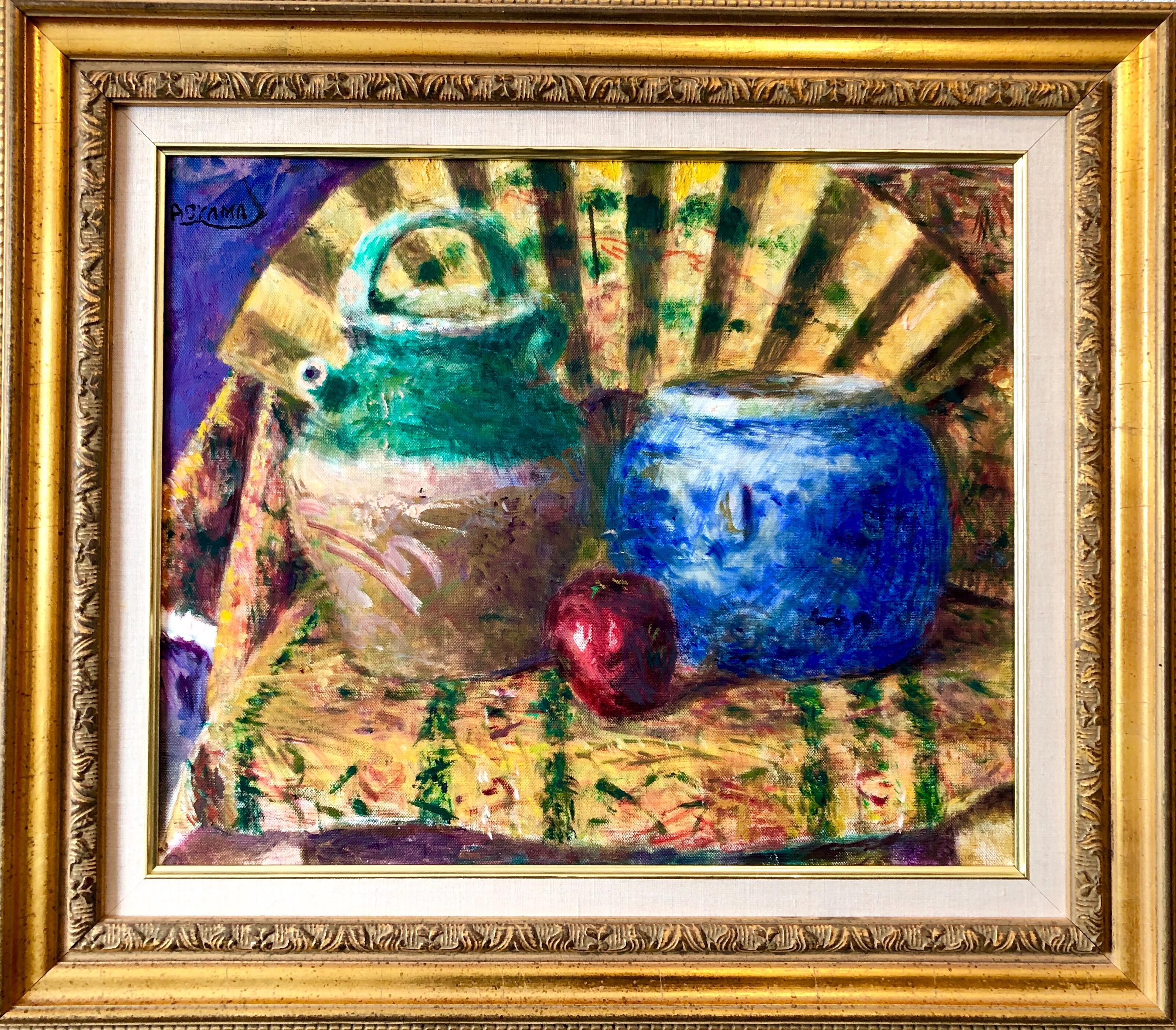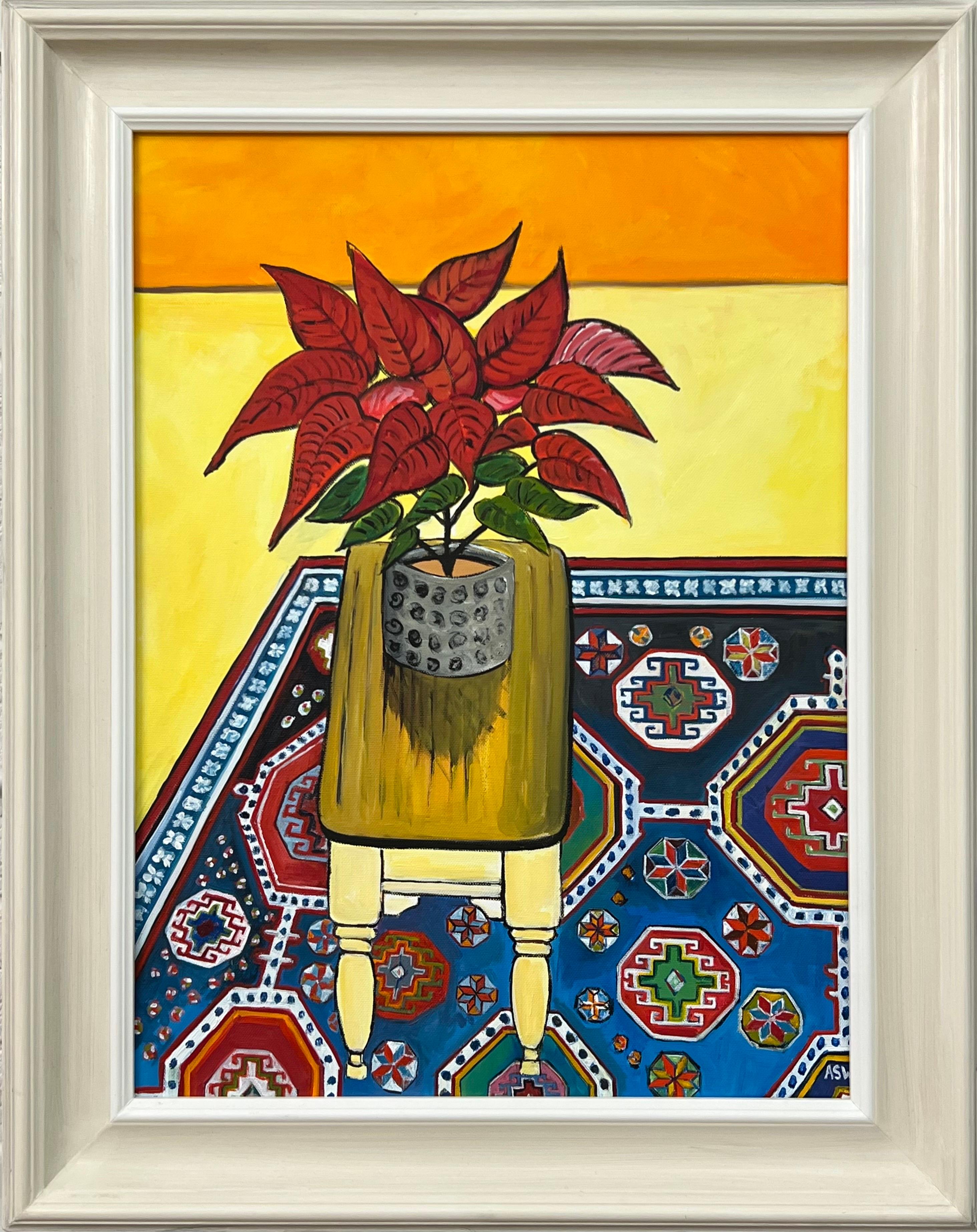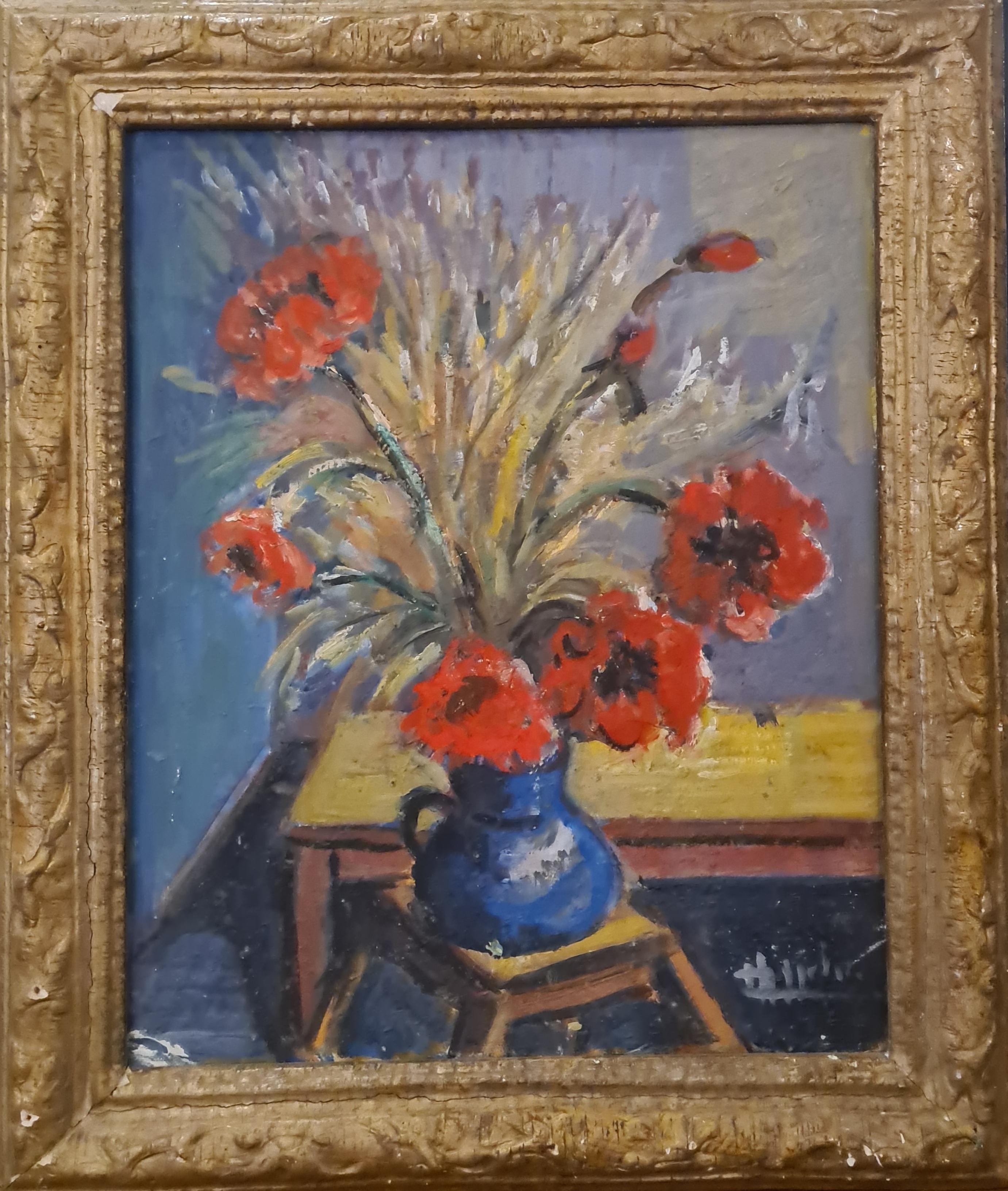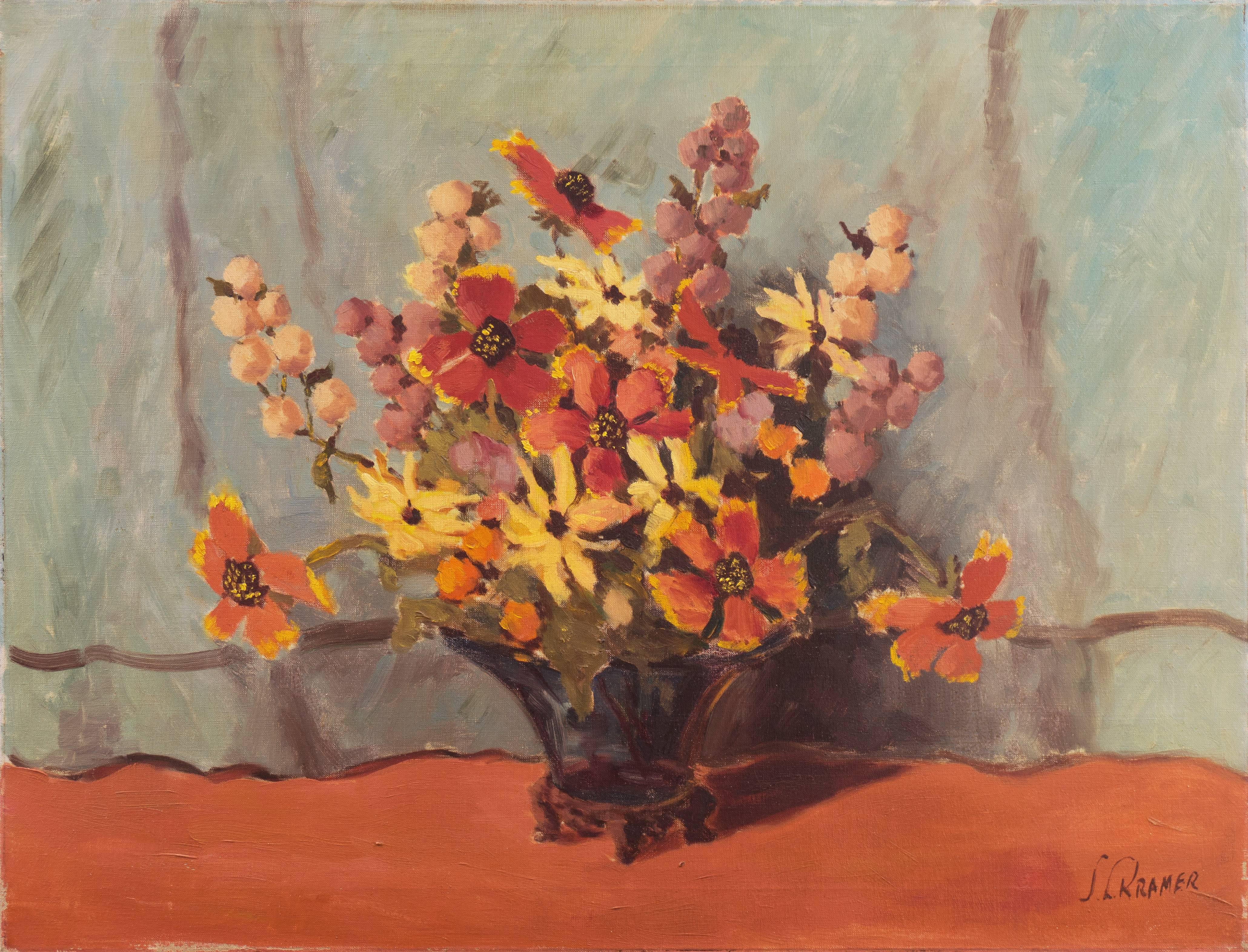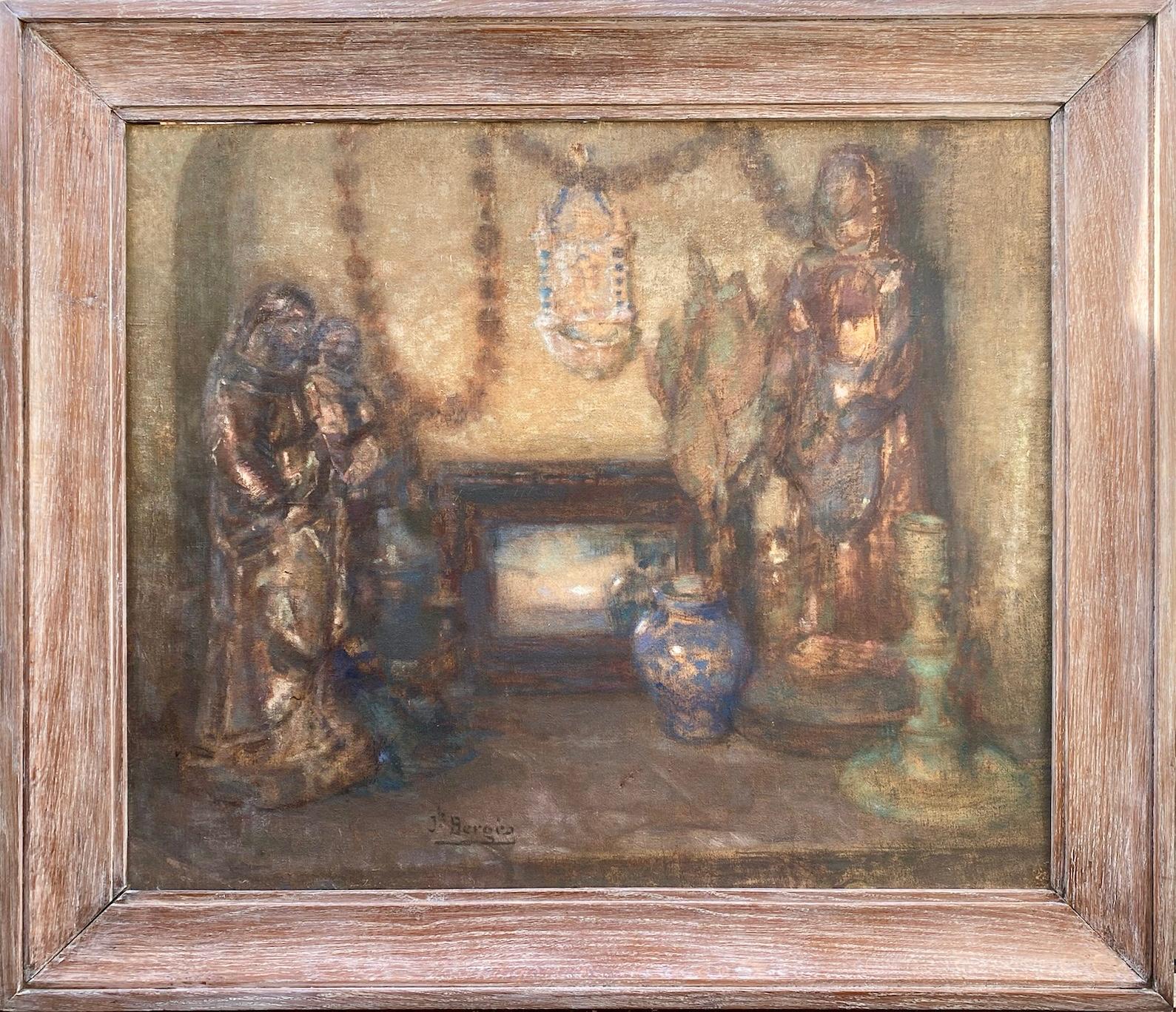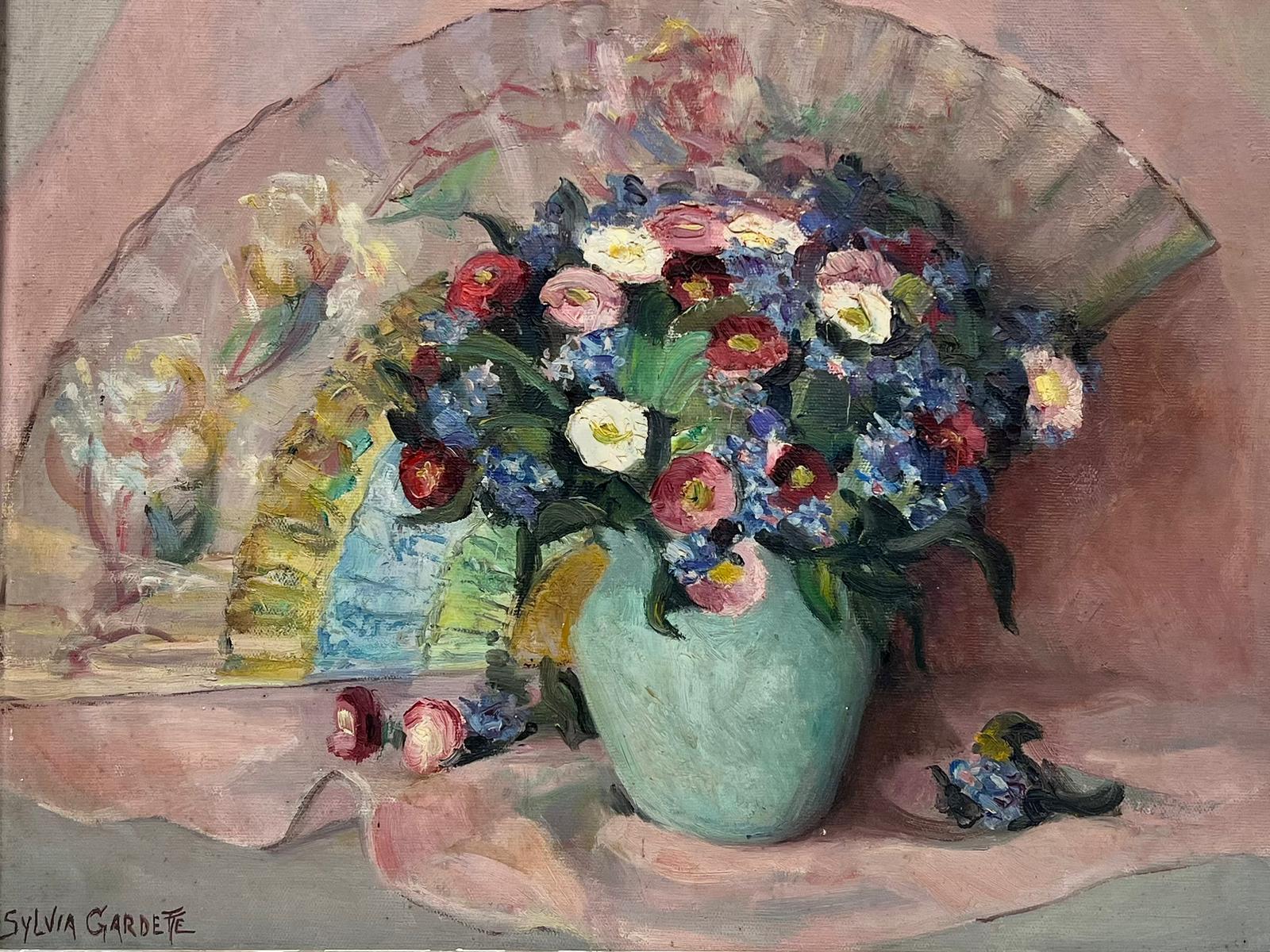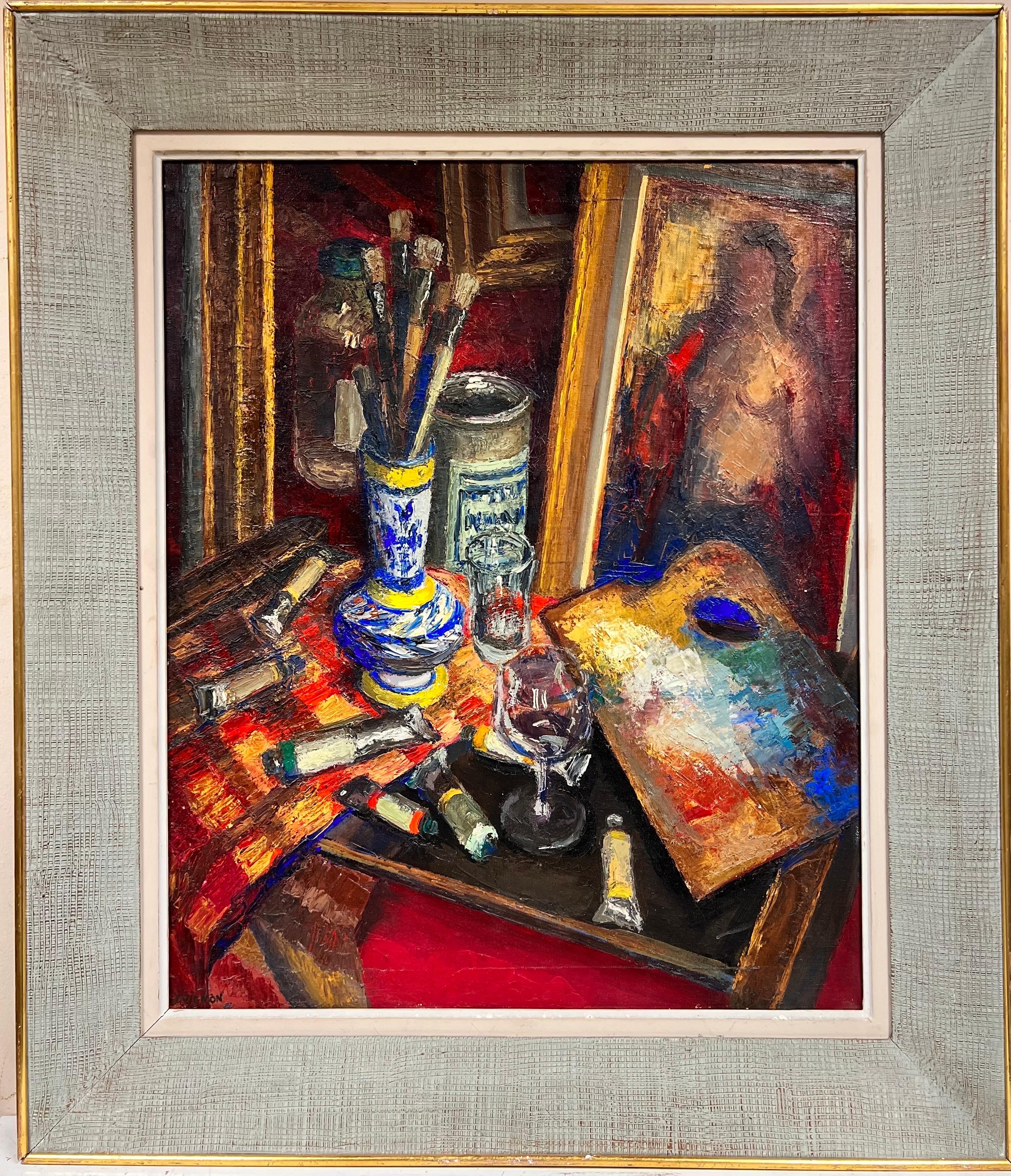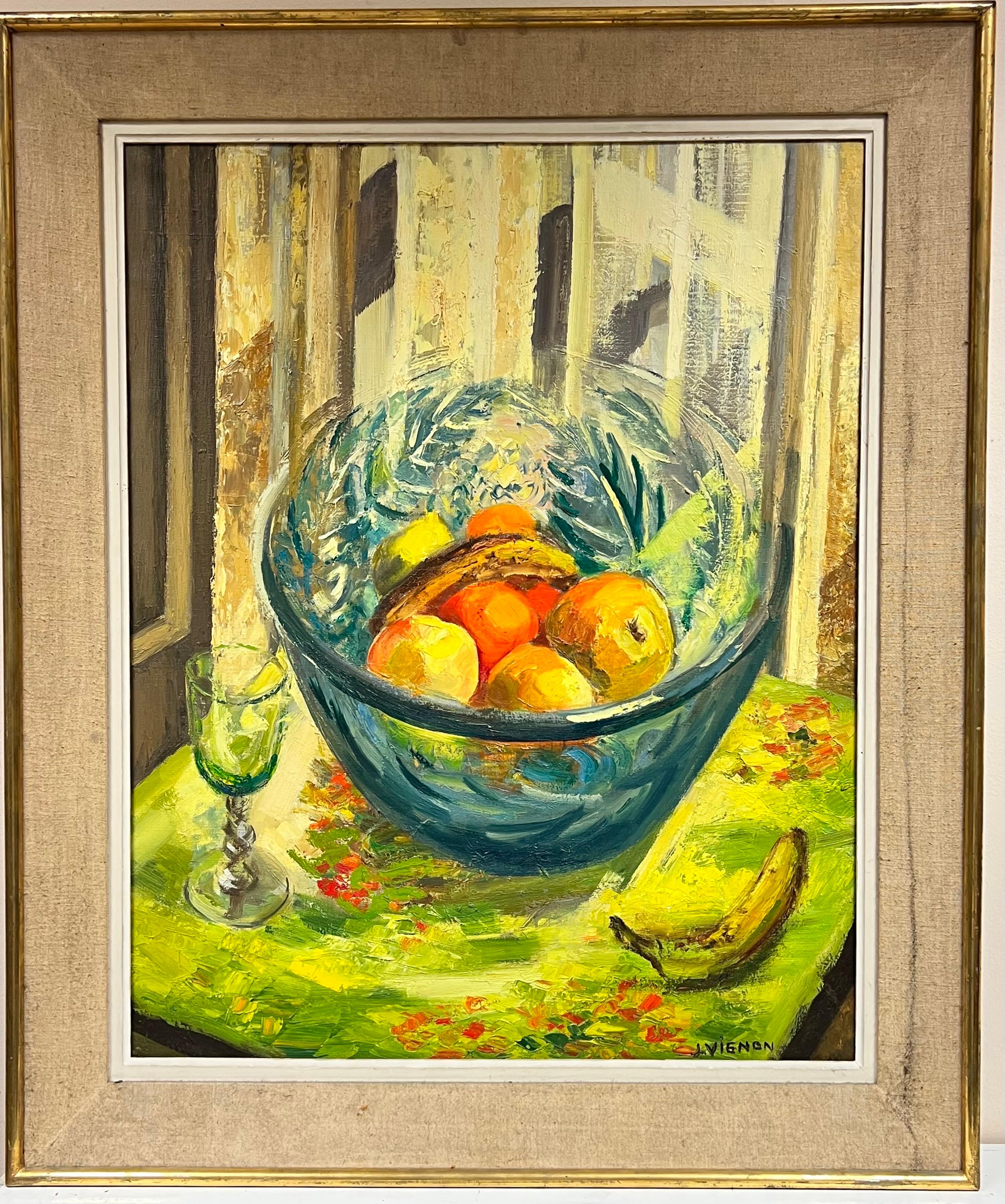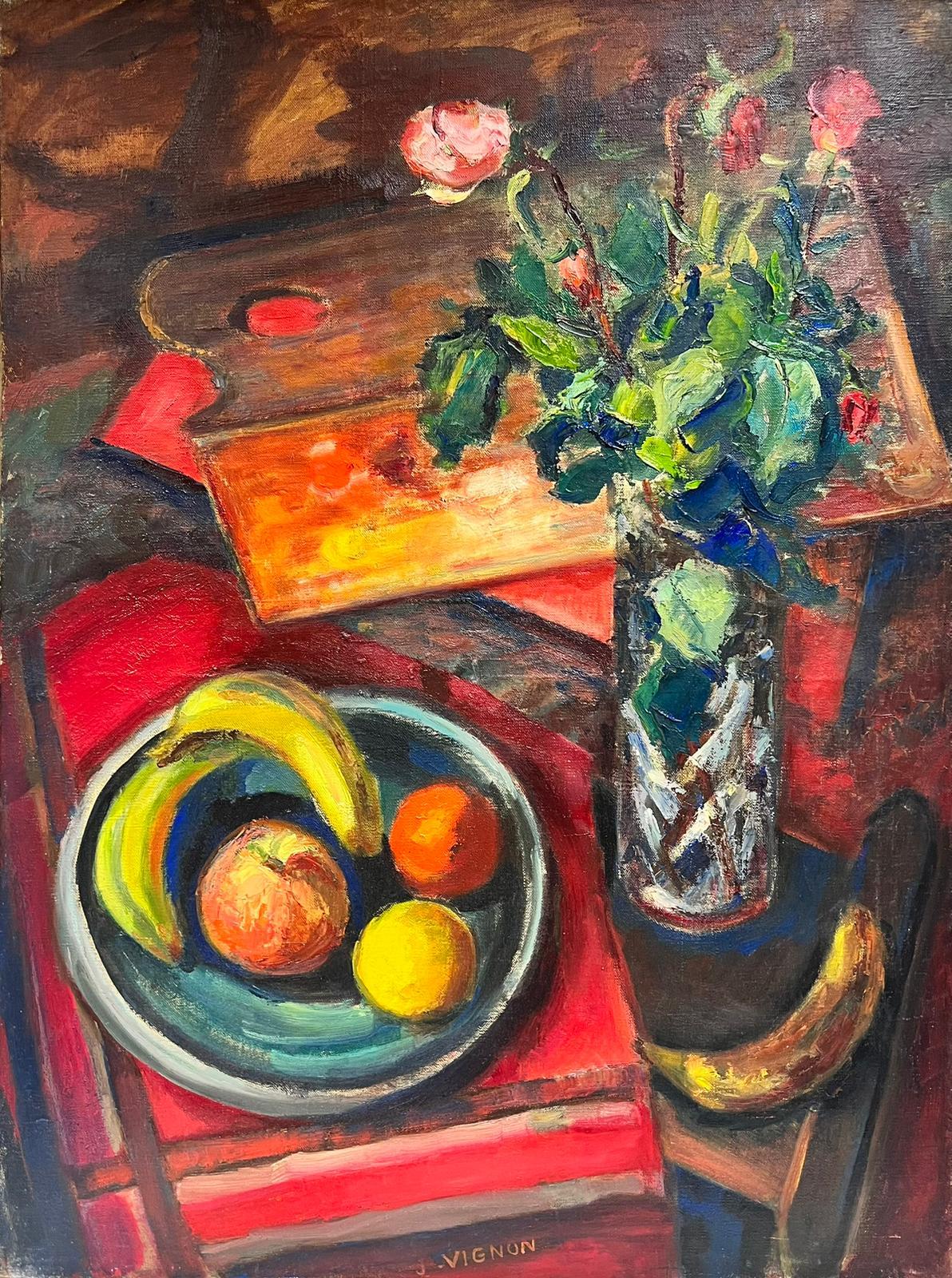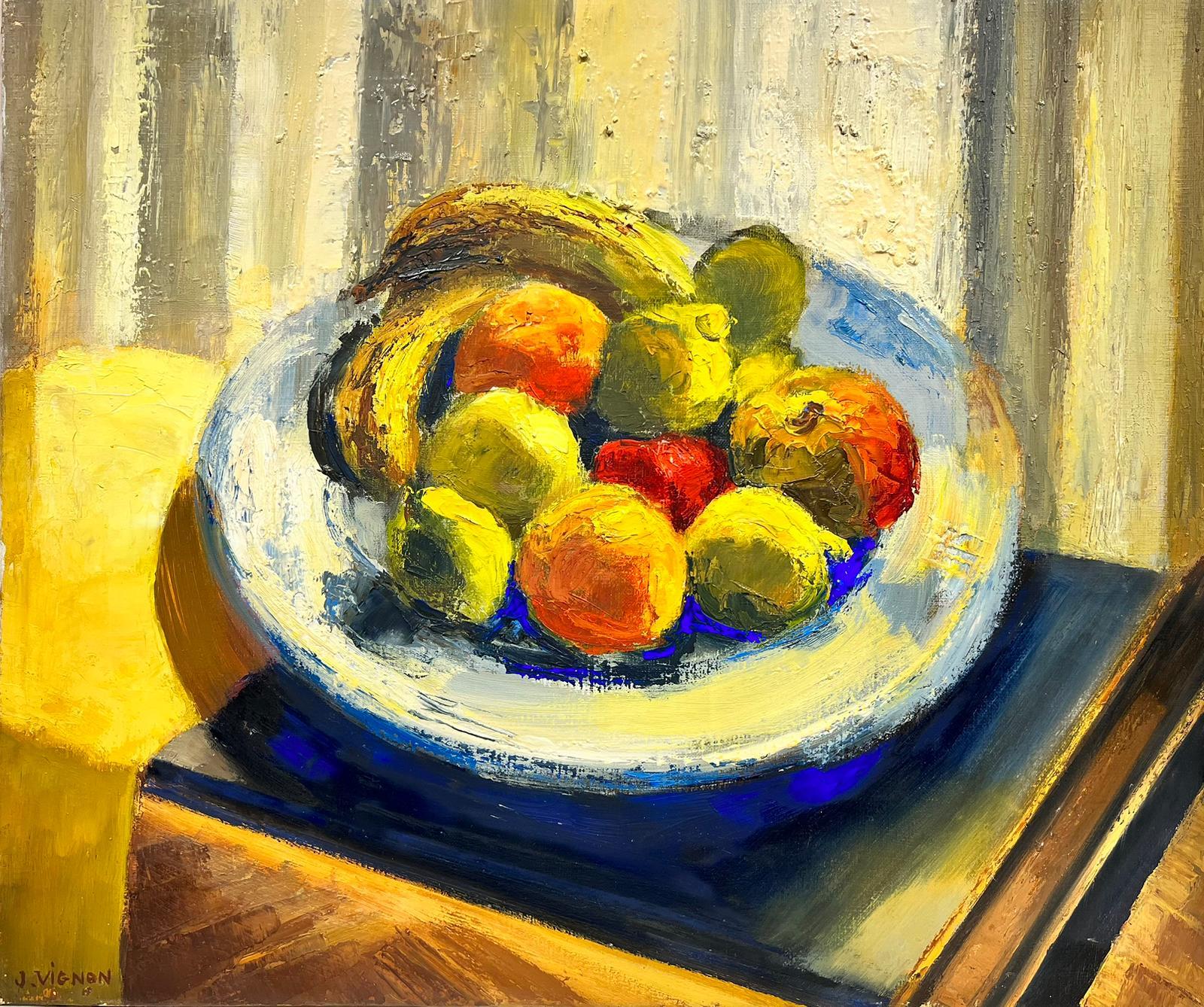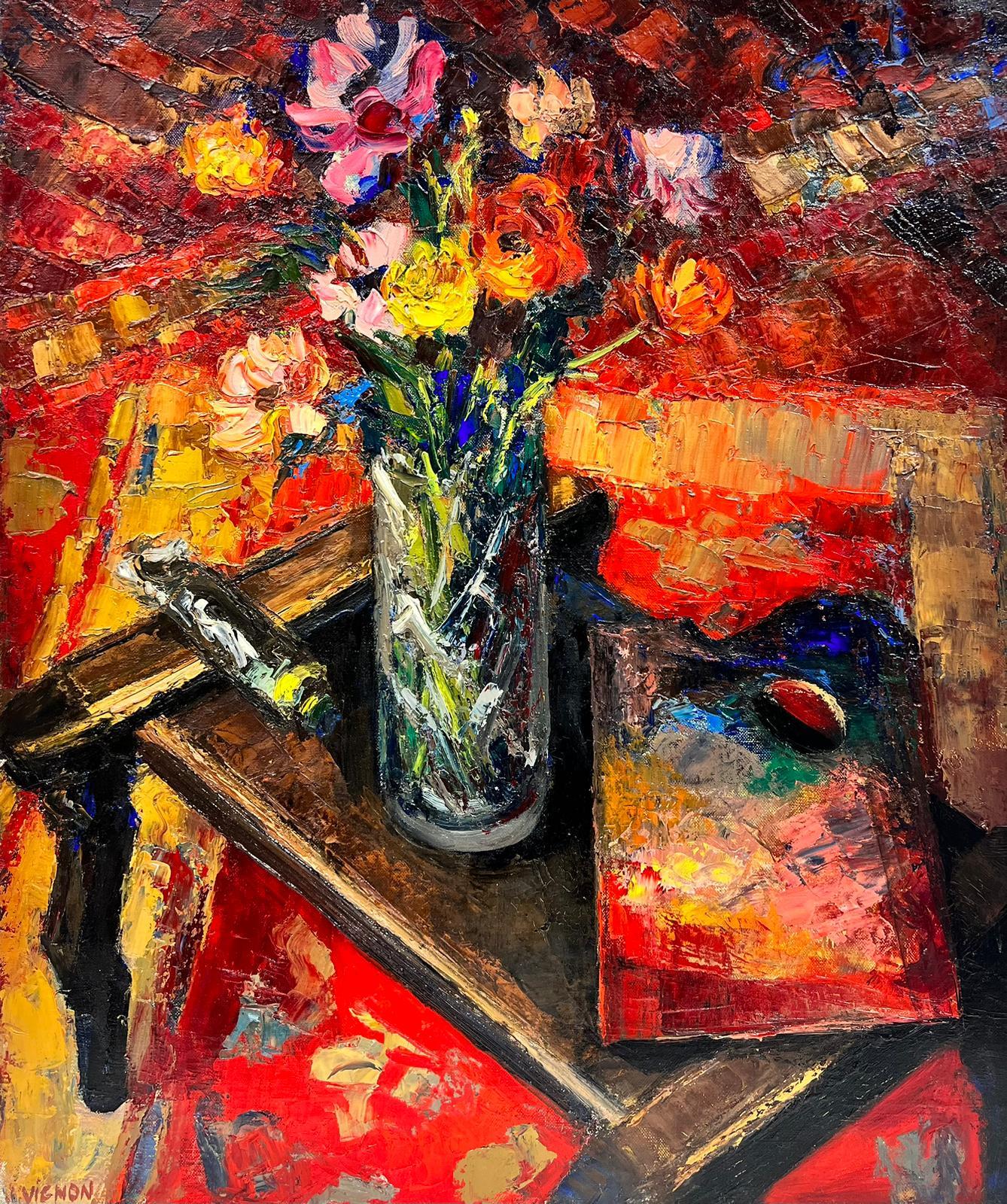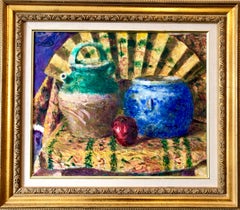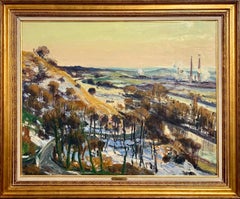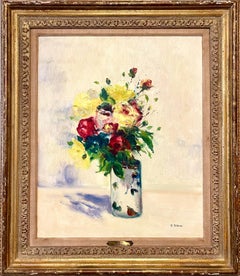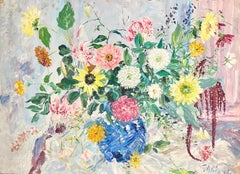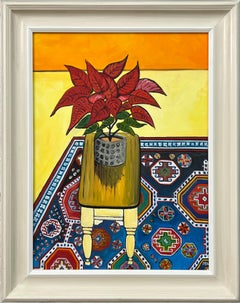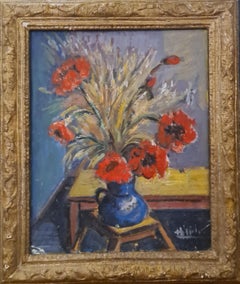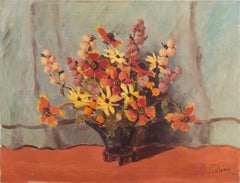
Japanese Fauvist Colorful Oil Painting Chinese Ceramic Jars with Fan and Apple
View Similar Items
Want more images or videos?
Request additional images or videos from the seller
1 of 14
Yoshio AoyamaJapanese Fauvist Colorful Oil Painting Chinese Ceramic Jars with Fan and Apple1981
1981
About the Item
About the Seller
4.9
Platinum Seller
Premium sellers with a 4.7+ rating and 24-hour response times
Established in 1995
1stDibs seller since 2014
1,760 sales on 1stDibs
Typical response time: 1 hour
Authenticity Guarantee
In the unlikely event there’s an issue with an item’s authenticity, contact us within 1 year for a full refund. DetailsMoney-Back Guarantee
If your item is not as described, is damaged in transit, or does not arrive, contact us within 7 days for a full refund. Details24-Hour Cancellation
You have a 24-hour grace period in which to reconsider your purchase, with no questions asked.Vetted Professional Sellers
Our world-class sellers must adhere to strict standards for service and quality, maintaining the integrity of our listings.Price-Match Guarantee
If you find that a seller listed the same item for a lower price elsewhere, we’ll match it.Trusted Global Delivery
Our best-in-class carrier network provides specialized shipping options worldwide, including custom delivery.More From This Seller
View AllJapanese Fauvist Colorful Oil Painting Chinese Ceramic Jars with Fan and Apple
Located in Surfside, FL
Yoshio Aoyama (Japanese, 1894-1996) "Nature Morte". Oil on canvas. 1981. Signed 'Aoyama' (upper left). Signed and titled 'Nature Morte' verso. 15" x 18" ...
Category
1980s Fauvist Interior Paintings
Materials
Canvas, Oil
French Post Impressionist Oil Painting Winter Scene, Seine River Gaston Sebire
By Gaston Sebire
Located in Surfside, FL
Large Painting
'Fin De Neige Sur la Seine' (End of Snow on the Seine)
1971
Oil on canvas
Hand signed and titled on canvas verso and dated on stretcher '10 Dec 71'.
Provenance: Wally...
Category
1960s Post-Impressionist Still-life Paintings
Materials
Canvas, Oil
French Post Impressionist Oil Painting Floral Roses, Vase Gaston Sebire Flowers
By Gaston Sebire
Located in Surfside, FL
Les Roses
Mixed bouquet of roses, Oil painting
PROVENANCE: Purchased at Findlay Galleries in Chicago, Illinois late 1960’s bears their label verso and has their original price tag
...
Category
1960s Post-Impressionist Still-life Paintings
Materials
Canvas, Oil
Large Bold Modernist Floral Bouquet Impasto Oil Painting Flowers Samuel Rothbort
By Samuel Rothbort
Located in Surfside, FL
Samuel Rothbort (1881-1972)
Floral, oil on canvas mounted board
22 x 30 1/2 in (55.9 x 77.5 cm),
Hand signed lower right.
Provenance: From the estate of the artist by descent to the granddaughter.
Samuel Rothbort (Russian American Jewish folk artist 1881-1972) was born in the small town, shtetl of Wolkovisk in the Russian Woodlands.During his youth he worked as a cantor and traveled to various towns and villages, gaining many impressions of life in that era. Poverty as well as the political unrest of the times led to his immigration to America in 1904. Upon arrival in America, Samuel Rothbort worked as a laborer and muralist eventually giving that up to become a watchman of newly built homes. While on duty he began molding figures in clay and upon the advice and encouragement of his employer and colleagues he began to take his artistic talents more seriously and pursued this endeavor. Rothbort therefore began doing free-hand painting, murals on walls and ceilings for private homes and commercial establishments. In 1909 he met and married Rose Kravitz, which marked the start of his career as an artist. Well known for his scenes of New York City life, executed in heavy impasto. Rothbort exhibited from the 1920s-60s, at the Salons of America, Pratt Institute, Brooklyn Museum, and a gallery at Rockefeller Center; however, he refused to sell his work, and in 1948, opened the Rothbort Home Museum of Direct Art, in his studio-home.
Samuel Rothbort was a self taught outsider artist painting every subject in his own folk art impressionistic style. His artistic range was broad and he never stopped creating. He was fascinated with nature and his works are filled with his delightful perceptions of his surroundings. Rothbort worked in oil, watercolor, and pen & ink. In the years of the depression there was little money, Rothbort could not afford paint or canvas. It was there that he began carving wood and stone using found materials like driftwood, rails, and old fence posts. While not associated with the WPA, he was an artist of that period and sensibility. Rothbort entered the art world and spent much of his life in pursuit of modernist painting and sculpture. He was a member the Society of Independent artists, the Salons of America, the People's Art Guild, and the Brooklyn Society of Artists. During the 1920's and early 1930's , Samuel Rothbort was regularly represented in exhibitions organized by The Brooklyn Museum of Art. Through the 1930's , Rothbort exhibited his watercolors and sculptures at Grant Studios in Brooklyn. In 1940, he began a 28 year relationship with the Barzansky Gallery on Madison Avenue in New York City exhibiting oils, watercolors, and sculpture in individual and group shows.
From 1915 through the 1960's, he was represented by many commercial galleries. Hamilton Easter Field, artist, publisher and founder of the Brooklyn Society of Artists was an early supporter of Rothbort's art work and helped further his career.
Rothbort received much recognition for his naive folk art paintings which he often displayed in unique primitive frames that he had hand-carved he is also known for his social realist street scene paintings. In 1952, Rothbort wrote a book on his sculpture, entitled "Out of Wood and Stone", which he dedicated to Hamilton Easter Field. A significant expression for Samuel Rothbort's career occurred in the late 1930's through the 1940's when he began painting "memory paintings " or recreation of his boyhood experiences of life in the ghettos and surrounding areas of the woodlands and marshes of Polesia - White Russia. A prized winning documentary, "Memories of The Shtetl" was produced by Harriet Semegram (previously titled " The Ghetto Pillow ") and shown at the Edinburgh Film Festival. It utilized 215 of Samuel Rothbort's watercolors and became the major visual resource material for Jerome Robbins movie and play, " Fiddler On The Roof ". Another award winning documentary on Jewish Folk Art " The Lost Wooden Synagogues of Eastern Europe " which was produced by Albert Barry and Florida Atlantic University, used many of Rothbort's paintings in the film to show life in pre-war Eastern Europe. The film was shown at the U.S. Holocaust Museum in Washington, D.C. and on Public Television.
He was a member of The Brooklyn Soc. of Artists; Soc. of Indp. Artists; and Brooklyn WCC. He exhibited at the SIA, 1917-40; Pratt Inst., 1919-22; Salons of Am., 1922-34; Brooklyn Mus., 1922-33; Charles Barzansky Gal., NY, 1940-44; Jewish Mus., NYC, 1984-85. His works hang in the NMAA; Brooklyn Mus.; Heckscher Mus.; Mus. of Stony Brook; Montclair AM; Sardoni AG; and Rutgers Univ. AG. Samuel was best known for his scenes painted in and around NYC. He had a bold style marked by heavy impasto.
Selected Solo Exhibitions:
2003 New York, NY; Luise Ross Gallery
New York, NY; Hollis Taggart Galleries
1998 East Hampton, NY; Morgan Rank Gallery
New York, NY; Benjamin Cardozo Gallery, Yeshiva University Museum
1997 New York, NY; Giampietro Gallery
1985 Brooklyn, NY; Chassidic Art Institute
1968, 64 New York, NY; Kaufman Art Center
1940-6, 54, 56, 61, 65 New York, NY; Charles Barzansky Galleries
1960 Chicago, IL; Welna Gallery
1940 Brooklyn, NY; Tilden Gallery
1938 Brooklyn, NY; Lincoln Gallery
1934 Brooklyn, NY; Grant Studios
Selected Group Exhibitions:
1998 Huntington, NY; Heckscher Museum, Celebrating New York:
A Centennial Exhibition
1984-86 New York, NY; The Jewish Museum, The Jewish Heritage in
American Folk Art (Travelling exhibition)
1968 New York, NY; National Arts and Antiques Show
1940-68 New York, NY; Charles Barzansky Galleries
1964 Bethesda, MD; Chevy Chase Gallery
1963 Huntington, NY; Heckscher Museum
1944 Richmond, VA; Virginia Museum of Fine Arts
1917-23, 25-31, 34, 38-40 New York, NY; Society of Independent Artists
1939 New York, NY; Academy of Allied Arts Gallery
1937-39 New York, NY; Vendome Gallery
1934, 39 New York, NY; Fifteen Gallery...
Category
20th Century Post-Impressionist Interior Paintings
Materials
Oil, Canvas, Panel
Bold Folk Art Modernist Floral Bouquet Oil Painting Flowers in Vase Gilt Frame
By Samuel Rothbort
Located in Surfside, FL
SAMUEL ROTHBORT (Russian-American, 1882-1971), still life with wild flowers, oil on canvas board, signed lower left.
Framed 25.5 X 30, board 18.5 X 23
Samuel Rothbort (Russian American Jewish folk artist 1881-1972) was born in the small town, shtetl of Wolkovisk in the Russian Woodlands.During his youth he worked as a cantor and traveled to various towns and villages, gaining many impressions of life in that era. Poverty as well as the political unrest of the times led to his immigration to America in 1904. Upon arrival in America, Samuel Rothbort worked as a laborer and muralist eventually giving that up to become a watchman of newly built homes. While on duty he began molding figures in clay and upon the advice and encouragement of his employer and colleagues he began to take his artistic talents more seriously and pursued this endeavor. Rothbort therefore began doing free-hand painting, murals on walls and ceilings for private homes and commercial establishments. In 1909 he met and married Rose Kravitz, which marked the start of his career as an artist. Well known for his scenes of New York City life, executed in heavy impasto. Rothbort exhibited from the 1920s-60s, at the Salons of America, Pratt Institute, Brooklyn Museum, and a gallery at Rockefeller Center; however, he refused to sell his work, and in 1948, opened the Rothbort Home Museum of Direct Art, in his studio-home.
Samuel Rothbort was a self taught, naive, outsider artist painting every subject in his own folk art impressionistic style. His artistic range was broad and he never stopped creating. He was fascinated with nature and his works are filled with his delightful perceptions of his surroundings. Rothbort worked in oil, watercolor, and pen & ink. In the years of the depression there was little money, Rothbort could not afford paint or canvas. It was there that he began carving wood and stone using found materials like driftwood, rails, and old fence posts.
Rothbort entered the art world and spent much of his life in pursuit of modernist painting and sculpture. He was a member the Society of Independent artists, the Salons of America, the People's Art Guild, and the Brooklyn Society of Artists. During the 1920's and early 1930's , Samuel Rothbort was regularly represented in exhibitions organized by The Brooklyn Museum of Art. Through the 1930's , Rothbort exhibited his watercolors and sculptures at Grant Studios in Brooklyn. In 1940, he began a 28 year relationship with the Barzansky Gallery on Madison Avenue in New York City exhibiting oils, watercolors, and sculpture in individual and group shows.
From 1915 through the 1960's, he was represented by many commercial galleries. Hamilton Easter Field, artist, publisher and founder of the Brooklyn Society of Artists was an early supporter of Rothbort's artwork and helped further his career.
Rothbort received much recognition for his naive folk art paintings...
Category
20th Century Post-Impressionist Interior Paintings
Materials
Oil
1925 Viennese Oil Painting Interior Still Life with Porcelain Vase, Tapestry Rug
Located in Surfside, FL
Framed 21.2 X 25.5
Unframed 17 X 21
Signed and dated 1920.
Nina Karasek (Joële)
born 1883 Kuttenberg, Czech Lands, Austro-Hungarian Empire, died in 1952 (I have also seen the date recorded as 1933) Vienna, Austria. Nina Karasek was an Austrian Impressionist & Modern artist who was born in 1883. Her work was featured in exhibitions at the Es Baluard, Museum of Modern & Contemporary Art and the Bildraum Bodensee.
Little is known of Nina Karasek's life. She was born in 1883 in Kuttenberg (Kutná Hora) in Bohemia, studied art at the Kunstschule für Frauen und Mädchen (Art School for Women and Girls) in Vienna, Austria, under Adalbert Seligmann and Tina Blau. She studied at the Frauenakademie in Vienna and Munich. In the 1920's she worked first as a landscape painter and an illustrator, later turning toward symbolism, painting mystical subjects after her interest in spiritualism. Her conventional works were shown at various exhibitions. At the age of 44, while she was copying a work by Rembrandt in an Italian museum, she fell into an altered state of consciousness. Rembrandt appeared to her, took possession of her arm, and immediately her hand started to draw something quite different from what she had intended. From then on, for the rest of her life Nina Karasek was in “supernatural” contact with a series of great masters like Rembrandt, Albrecht Dürer, Goya, Raphael, Leonardo da Vinci, Gustav Klimt and others. Under their guidance and inspiration, she drew and painted works "in the style" of the masters. But very soon her works became stylistically more and more unrestricted and Symbolist, showing an enormous range of creative expression, ranging from symbolic and allegorical motifs to bewildering images with a fantastic arsenal of figures and private characters, signs, and symbols, and to frantic, gestural sketches and abstract compositions. From then on, she often signed her works with her esoteric “primordial name” Joële. (Nina Karasik-Joel)
Almost everything we know about her life was from what she noted on the reverse of her drawings: sometimes diary-like notes of her horrible living conditions during World War II, but often strangely impenetrable explanations of the depicted motifs – often as fascinating and mysterious as the drawings themselves. In her works and notes, an exciting private cosmology and mythology unfolds, a drama of hidden powers and principles that flow through macrocosm as well as microcosm. Shortly after their discovery, Nina Karasek's Spiritualist, mediumistic works have found their way into galleries and major international collections.
SELECT EXHIBITIONS
2019 The Medium’s Medium: Spiritualist Art Practices From the Turn of the Century and Beyond. The Gallery of Everything, London, (she showed with Madge Gill, Augustin Lesage, Fleury-Joseph Crépin...
Category
1920s Symbolist Interior Paintings
Materials
Canvas, Oil
You May Also Like
Still life with apples 1961. Canvas, oil, 50x70 cm
Located in Riga, LV
Still life with apples
1961. Canvas, oil, 50x70 cm
Published at book Biruta baumane on 78 page
"Still Life with Apples" is a stylized still life pain...
Category
1960s Fauvist Still-life Paintings
Materials
Oil, Canvas
$4,439 Sale Price
20% Off
Still Life Painting of a Poinsettia Plant on a Persian Rug by British Artist
By Angela Wakefield
Located in Preston, GB
Still Life Painting of a Poinsettia Plant on a Persian Rug by Contemporary British Artist
Art measures 18 x 24 inches
Frame measures 24 x 30 inches
Angela Wakefield has twice bee...
Category
2010s Fauvist Still-life Paintings
Materials
Canvas, Paint, Acrylic
Mid 20th Century French Oil on Board. 'The Blue Vase'.
Located in Cotignac, FR
French Mid 20th Century oil on board Fauvist still life, flowers in a vase in an interior scene, by Hyppolite Roger. The painting is signed bottom righ...
Category
Mid-20th Century Fauvist Still-life Paintings
Materials
Board, Oil
$1,433 Sale Price
22% Off
'Still Life, Rust and Jade', American School Spring Flowers Post-Impressionist
Located in Santa Cruz, CA
Signed lower right, 'S. L. Kramer' (American, 20th century) and painted circa 1960.
A mid-century, oil still-life showing a bouquet of spring flowers informally arranged in a glass ...
Category
1950s Post-Impressionist Still-life Paintings
Materials
Canvas, Oil
A rustic chapel, natural earth tones, devotional objects and saint figures
Located in Norwich, GB
Here is your chance to have your own private chapel with devotional objets and saint figures - in the form of this lovely painting by Joseph Bergès (1878-1956).
Berges was born in the South East of France in the Pyrenees, not far from the Spanish border.
After studying at the Academy of Fine Arts in Toulouse, he was accepted at the Paris Academy. However, although his career took him to Paris, a remained very much attached to his homeland, a pious, rustic area with many chapel such as the one he portrayed here.
Having studied with the Masters Eugène Cormon and Léon Bonnat , Bergès exhibited at the Salon des Artistes Français from 1907.
He was obtained a second Grand Prix de Rome in 1908 for the painting The Death...
Category
1930s Pointillist Still-life Paintings
Materials
Canvas, Oil
Mid 20th Century French Signed Oil Beautiful Flowers in Teal Vase Pink Back
Located in Cirencester, Gloucestershire
French School, circa 1950
signed 'Sylvia Gardette'
Still Life of Flowers in a teal colored vase against a soft pink background
oil on canvas, framed in...
Category
Mid-20th Century Post-Impressionist Still-life Paintings
Materials
Oil, Canvas
Recently Viewed
View AllMore Ways To Browse
Fauvist Garden
Vintage Japanese Floats
Chinese Screen 18
Tower Of Babel
Fine Art Oriental Prints Framed
Paintings Of French And Italian Riviera
Nature Morte Picasso
Ukiyo Samurai
Japanese Screen Of Fans
Chinese Love Seat
1910 Love Seat
Pablo Picasso Nature Morte
17th Century Kano
Jar Fan
Dufy Ceramic
Hand Painted Japanese Screen Watercolor
Fujita Artist
Ceramic Italian Garden Seat
